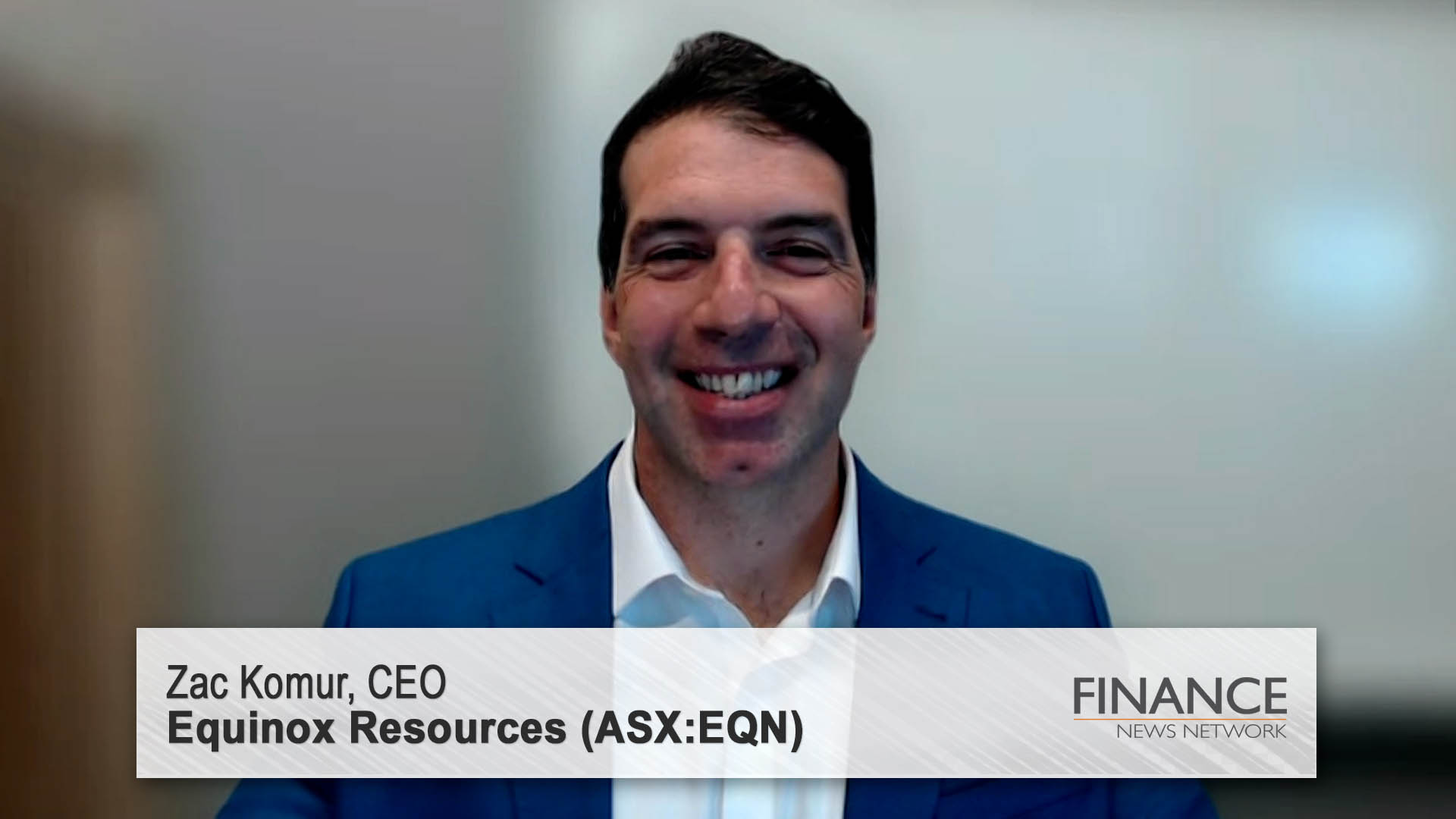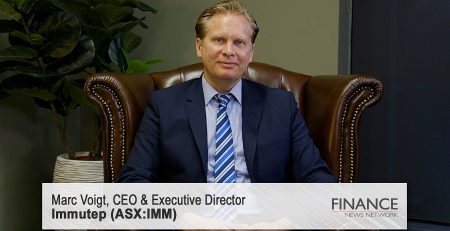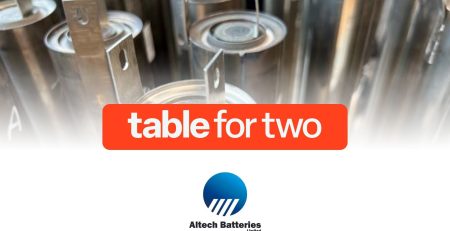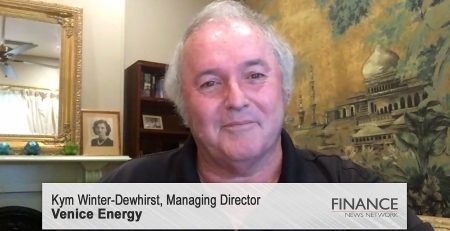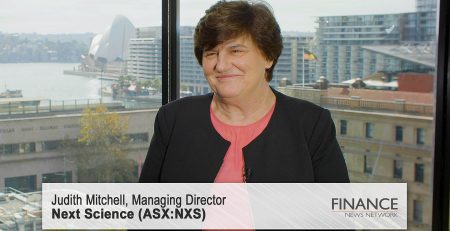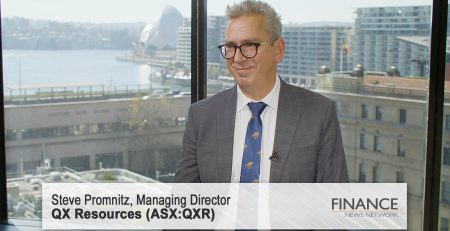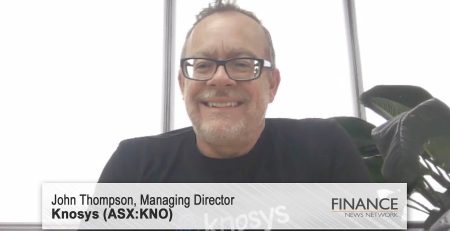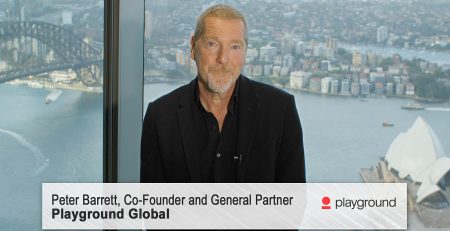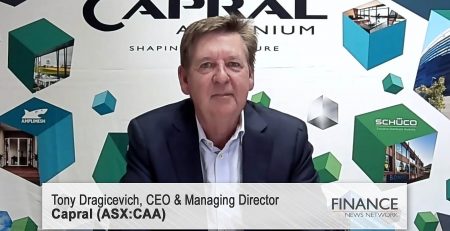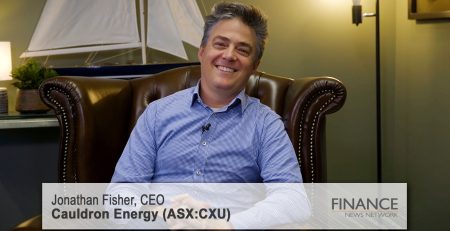Equinox Resources (ASX:EQN) exploring rare earths in Brazil
Equinox Resources Limited (ASX:EQN) CEO Zac Komur discusses the company's move to apply for a large tenement in Brazil, and the attractions of the jurisdiction.
Paul Sanger: I'm Paul Sanger for the Finance News Network, and today I'm talking with Equinox Resources. Their ticker code is "EQN" and they have a market cap of around $29m. Equinox Resources specialises in the exploration and development of iron ore, lithium, and other future-facing commodities that are integral for a sustainable tomorrow. All their current projects are wholly owned and strategically situated in Western Australia and Ontario, Canada's prime mining territory, and are poised to make a significant impact in the industry. A warm welcome to Equinox CEO Zac Komur. Zac, welcome.
Zac Komur: Thanks for having me, Paul.
Paul Sanger: Absolute pleasure. Zac, to kick things off, can you just give us a brief overview of your current projects?
Zac Komur: So, our current projects, our Hamersley Iron Ore Project is our maiden project, which kicked off the IPO back in 2021. We have a JORC resource of 343 million tonnes at 54.5 per cent iron in the Pilbara, and we have an option there to actually high-grade that asset at 58 to 63 per cent iron, which sits above the water table. And we're currently engaging with the traditional owners there to unlock that asset. We also have West Australian lithium tenements, and there's field reconnaissance currently underway to undergo some soil and rock chip samples. And those tenements are adjacent to Mineral Resources' Mount Marion lithium mine. And we also have some Canadian tenements in Ontario which stretches over 20,000 hectares. And there's some reconnaissance work underway there as well.
Paul Sanger: And also, Zac, tell us a little bit more about your background. I believe, prior to joining Equinox, you worked for both Fortescue (ASX:FMG) and BHP (ASX:BHP).
Zac Komur: Yeah. Fortescue, BHP, INPEX, and also Northvolt, overseas, as a battery producer. So, 23 years in the resources sector, spanning various roles from mining development, project delivery, commercialisation, commissioning a startup, across various commodities including iron ore, nickel, cobalt, lithium. And also spent some time overseas in South Korea with INPEX on the commissioning and startup of the CPF, in Africa for South32 (ASX:S32) in manganese mining operations, and in Sweden and Portugal with Northvolt, where I helped successfully start up Europe's first battery gigafactory. But 10 years with BHP as well in iron ore and nickel and cobalt, and also had an opportunity to venture in Brazil back in 2009 for a nickel and cobalt project. And also, moving back to Australia, I was the head of commercialisation for Fortescue Future Industries.
Paul Sanger: That's a pretty impressive resume, Zac. So, what attracted you to Equinox?
Zac Komur: I think the challenge. Having a chat to Rob Martin and the board and the investors, it was an opportunity to actually deliver without being caught up in red tape and capitulation. I saw that at some of the big majors. A lot of great work gets put forward to senior leadership teams and the like, but because of capitulation and red tape, some of those great ideas don't progress into execution, and I found that quite frustrating. And being at the helm, you could make those calculated decisions and move forward.
Paul Sanger: So, Zac, your primary focus to date for Equinox has been iron ore, battery metals and green energy resources. Today, you just announced to the market that EQN has applied for a highly prospective rare earths tenement in Brazil. Can you walk us through this transaction? Why rare earths and why Brazil?
Zac Komur: Brazil ticks a lot of boxes for us. It's a premiere mining jurisdiction. It has a high rich resource base, great infrastructure, great legislative regimes around mining. The Brazilian electricity network is backed on hydro and wind and solar. So, downstream, when we look to build a processing facility, scope two emissions will be reduced. It's also a low-cost jurisdiction. For RC drilling, it only costs $50 a metre to drill in Brazil, which is four to five times the cost in Australia and Canada.
I had always looked at Brazil when coming into Equinox, and also pivoting towards ionic rare earth clays. Rare earths is a need. Ninety per cent of the rare earths at the moment are coming out of China. And we foresee a bifurcated market coming out as China restricts supply to the world, and Western supply is critical for that. But when it comes to rare earths, you should always start with an end in mind. There are a lot of great hard rock deposits out there, but the hard rock route requires extensive pyro and hydrometallurgical processes, which require $1.5 billion to $2 billion worth of capex downstream, when the ionic rare earth clay route doesn't require any drilling or blasting. The downstream route is simple leaching with ammonium sulphate, and it's really just key to find a key high-concentration ionic rare earth clay deposit.
And looking in Brazil and working with the team in Brazil, I came across some great geophysical markers, which kind of drew our attention to the Bayer region. And I recently spent a month in Brazil looking at various potential acquisitions in lithium and rare earth clay deposits. Some of those were overvalued with the team on the ground. So, we did our homework and started pegging in the Bayer region. And as I was over there, the prospectus for Brazilian Rare Earths Limited was actually announced, and I found out that Gina and Whitehaven Coal (ASX:WHC) and others were backing that, and I just happened to be in the same region as they were.
Paul Sanger: And a takeaway from there is the jurisdiction of Brazil. The capex is obviously cheaper to develop projects in Brazil. And more importantly, the ESG credentials. Having access to the renewable power that you stated is going to be incredibly important for the project going forward, and hopefully attract investors onto your register.
Zac Komur: Absolutely.
Paul Sanger: Okay. Now, let's talk about some of the peers in the immediate region. And how does your Camp Grande Project compare to these other projects?
Zac Komur: Yeah. Campo Grande, it actually refers to big field. It's a large tenement size, actually 170,000 hectares, which equates to the size of the island of Maui in Hawaii. So, driving from the north of the tenement to the south of the tenement stretches across six hours of driving. And I'm looking at splitting that tenement into various paths where we could kick off exploration campaigns along the strike. We are situated close to Brazilian Rare Earths, along the anomalies that we foresee in the geophysical data as part of the research that was done by the Brazilian government. But the Brazilian Rare Earth Limited has also acquired Rio Tinto's JORC compliant drill-core that was drilled out by Rio Tinto. They were looking for bauxite quite some time, years ago.
Paul Sanger: And I believe Brazilian Rare Earths are going to IPO here in Australia. I also believe their tenement is smaller than yours and their valuation is around $300m?
Zac Komur: Yeah. They have a valuation of $315m once fully prescribed on the IPO. I guess they are leading in with a JORC-compliant resource. And it's key for us to kick off exploration once those exploration tenements are granted to us in January, to then work through the high-grade areas to then get a JORC-compliant resource in the future.
Paul Sanger: So, there's a strong chance that, in the first quarter of next year, your stock will get re-rated?
Zac Komur: That's the plan, Paul. Deliver shareholder value as much as possible and really continue progressing through spending our dollars in the ground to understand the resource and get those concentrations and areas drilled out, to then kick off further studies into processing.
Paul Sanger: And just to finish on that, Zac, what is the strategy for exploration and the development of this new rare earth asset?
Zac Komur: I'm actually in the process of holding several interviews to find an exploration manager in Brazil. And a key one there is finding a competent person in ionic rare earth clays. And once the exploration tenements are granted, it's kicking off an auger drilling campaign. A majority of the ionic rare earth clay deposit sits approximately 20 to 40 metres in the high-concentration regions. So, when it comes to auger drilling, you don't need the RC or diamond drilling process, which can be capital intensive. So, it's much more easier to drill out. And we have a huge area to cover, so looking at various teams to split the tenement up. I actually have contractors on standby to kick off soil and hillside samples in December, to start mapping out which parts of the tenements we should start focusing on initially.
Paul Sanger: Zac Komur, many thanks for your time today.
Zac Komur: Thank you, Paul. Appreciate it.
Ends
Copyright 2023 – Finance News Network
Source: Finance News Network

